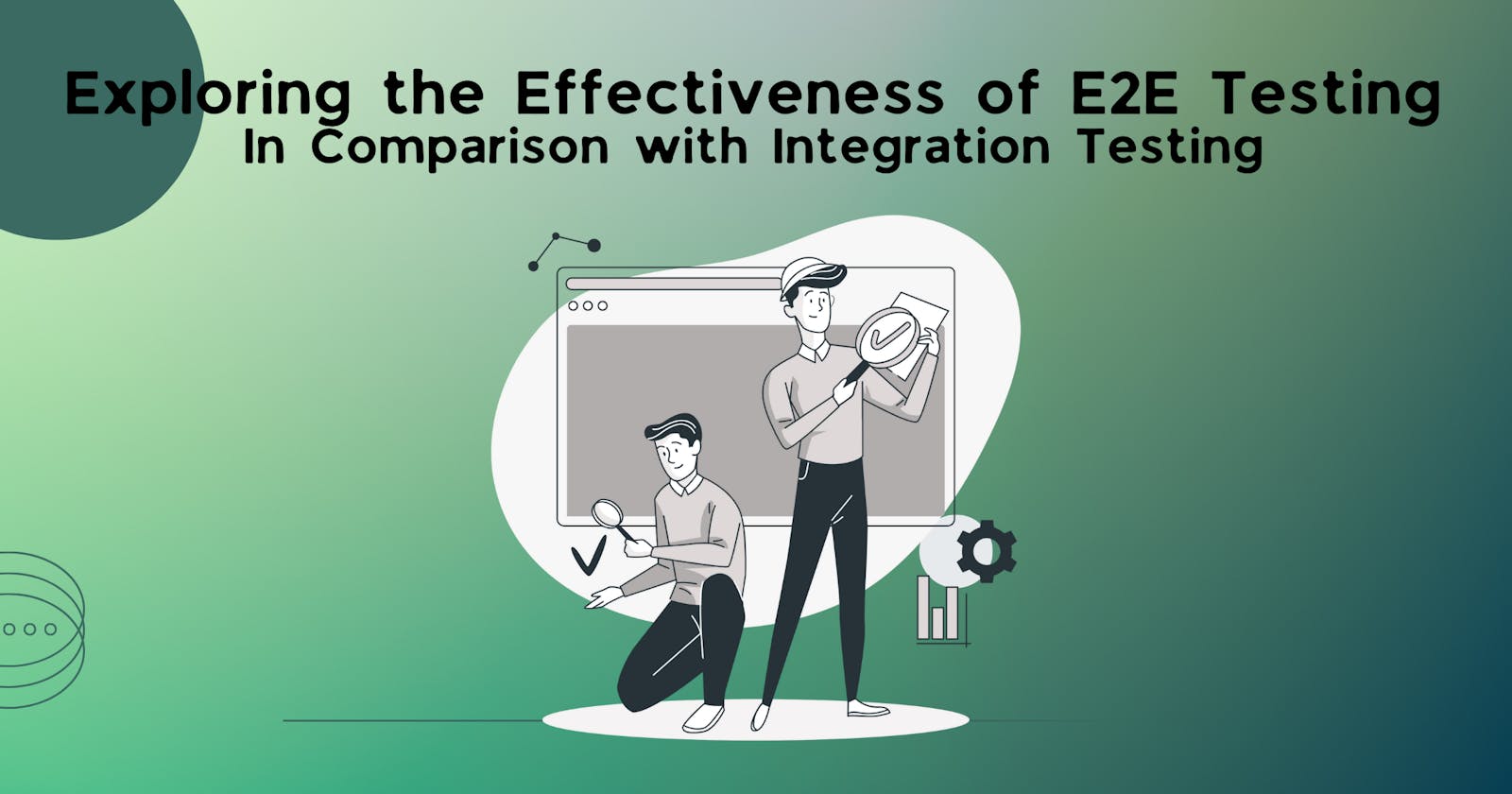Exploring the Effectiveness of E2E Testing: In Comparison with Integration Testing
In the diverse domain of software development, testing methodologies play a pivotal role in ensuring the robustness and reliability of applications. These methodologies serve as systematic approaches to identify and rectify potential flaws in code, ultimately contributing to the delivery of high-quality software products.
One cannot overstate the significance of testing in the software development life cycle. Rigorous testing practices not only validate the functionality of code but also enhance the overall user experience. Through systematic testing, developers can uncover and address issues before they reach end-users.
In the landscape of testing methodologies, End-to-End testing stands out as a thorough evaluation method. Unlike isolated testing, E2E testing takes a holistic approach, examining the entire system. This discussion explores the effectiveness of E2E testing against Integration testing, emphasizing its unmatched ability to ensure seamless functionality across all software components.
Examining Integration Testing

Integration testing serves as a critical phase in software development, where individual components or modules are combined and tested as a group. The primary objective is to detect any interface issues or discrepancies between integrated elements.
However, integration testing is not without its challenges. As we amalgamate various modules, issues such as data inconsistencies, communication breakdowns, and unexpected dependencies may surface. Debugging and identifying the root cause of problems become intricate tasks, often leading to delays in the development process.
Upon recognizing the limitations of integration testing, there arises a compelling need for a more holistic testing approach. While integration testing validates the collaboration between components, a comprehensive strategy, such as End-to-End (E2E) testing, becomes instrumental in ensuring the overall functionality of the entire software system. This broader perspective addresses issues that might go unnoticed in isolated integration testing, enhancing the overall quality and reliability of the software product.
Peeking into E2E Testing

End-to-end (E2E) testing is a testing methodology that evaluates the entire software system from start to finish. Unlike integration testing, which focuses on component interactions, E2E testing considers the holistic user experience, ensuring that all interconnected components seamlessly collaborate to deliver a cohesive application. This meticulous examination ensures that the software behaves as intended in diverse situations, providing a robust and user-friendly experience.
In contrast to integration testing, E2E testing has a proven track record of catching subtle yet critical issues that might be overlooked in isolated testing phases. For instance, scenarios involving user input, complex workflows, or dynamic data dependencies are effectively captured by E2E testing. These real-world examples underscore the superiority of E2E testing in identifying comprehensive system-level issues, making it a preferable choice over traditional integration testing methodologies.
Addressing Common Concerns 🕵🏼

A common misconception surrounding E2E testing is that it is excessively time-consuming. Contrary to this belief, E2E testing, when implemented strategically, can streamline the development process. By dispelling the myth of time inefficiency, developers can recognize the long-term benefits of robust, end-to-end evaluations that ultimately save time by identifying and preventing issues early in the development lifecycle.
Optimizing E2E testing processes is crucial for efficient development workflows. Incorporating parallel test execution, utilizing headless browsers, and selectively targeting critical paths are proven strategies to enhance the speed and efficiency of E2E testing. By implementing these optimization strategies, we can harness the full potential of E2E testing without compromising on time or resources.
While E2E testing offers comprehensive coverage, it's essential to strike a balance with other testing methodologies. Integration testing, unit testing, and performance testing each play a unique role in the software development lifecycle. Understanding how to integrate E2E testing seamlessly into a holistic testing strategy ensures that different facets of software quality are addressed. This harmonious approach maximizes the effectiveness of testing efforts without sacrificing the benefits of each methodology.
Addressing these common concerns fosters a more nuanced understanding of E2E testing among developers. By dispelling myths, optimizing processes, and promoting a balanced testing approach, we pave the way for a more effective and efficient software development lifecycle.
End-to-End Testing with Keploy 🐰

Keploy is an AI-powered test generation and automation tool that helps developers create better E2E Tests and Data-Mocks. The user simply needs to integrate Keploy into their application without performing any changes in their code. Once Keploy is added as a proxy, it'll start to analyze and record the user interaction and create comprehensive tests and data-mocks.
The users can also merge their Keploy Tests with their favorite testing libraries to see enhanced and combined test coverage. Yes, it's that easy!!
Conclusion 🏁

In conclusion, the software development landscape is evolving, demanding robust testing methodologies to ensure the delivery of high-quality, reliable products. While integration testing serves as a crucial phase in the development lifecycle, its limitations underscore the need for a more comprehensive approach. E2E testing emerges as a superior methodology, providing a holistic evaluation of the entire software system and addressing issues that may go unnoticed in isolated testing phases.
In the domain of testing, Keploy stands out as an innovative AI-powered tool, simplifying the test generation and automation process. With Keploy seamlessly integrated into applications, developers can effortlessly create comprehensive tests and data blocks, enhancing overall test coverage. As the industry continues to evolve, a nuanced understanding of testing methodologies becomes imperative, and E2E testing, coupled with innovative tools like Keploy, proves to be a cornerstone in achieving software excellence.

